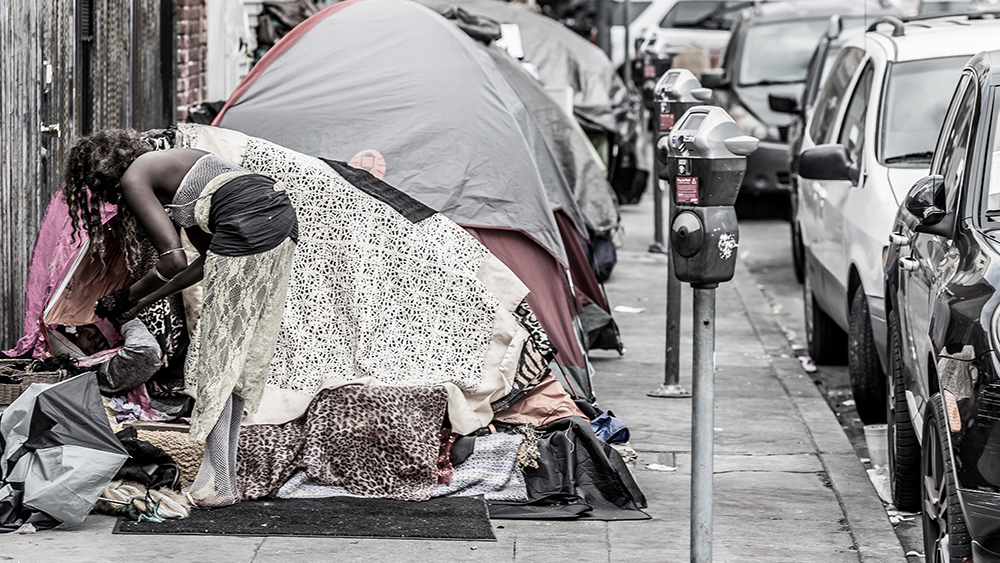
California dealt with an intense wildfire season that scorched about 10 million acres in 2020. This year, it looks like the state is in for another crisis in the form of extreme drought conditions.
In fact, the Golden State's drought conditions went from bad to worse in just a month. Warm temperatures last month melted most of the Sierra Nevada snowpack. But instead of melting into a generous volume of water and replenishing the state's gasping reservoirs, the snowpack evaporated and trickled into the ground.
Officials had been counting on the snowpack to replenish state water sources in anticipation of a dry spell. "We got unlucky," said Jeffrey Mount, a geologist and water expert at the Public Policy Institute of California. "A lot of [the snowpack] didn't make it into the reservoirs."
The unfortunate output of the Sierra Nevada mountain range helps explain why nearly a quarter of the state by land area is in "extreme" drought conditions or worse, including the entire Sacramento Valley and Bay Area, according to the latest map from the U.S. Drought Monitor, a weekly hydrological analysis by the federal government.
In particular, the monitor shows that 93 percent of California is in "extreme," "severe" or "exceptional" drought. Last month, only two-thirds of the state was facing those conditions.
Most of California faces extreme drought conditions
The worsening conditions follow another winter of below-average rainfall, creating a dire water situation. Now, farmers in California are still waiting on their meager five percent water allocation from the federal government's Central Valley Project.
On Wednesday, May 5, the Bureau of Reclamation said it was putting the release of the water allocations on hold. The announcement was a blow to rice farmers in Sacramento Valley, who produce about 97 percent of the state's rice.
Even those farmers with special contractual rights that entitle them to enhanced deliveries from the Central Valley Project will be facing a minimum 25 percent reduction to their water allocation, according to Jim Morris, spokesman for the California Rice Commission, a nonprofit representing rice farmers and handlers.
California Gov. Gavin Newsom, who is currently facing a recall election, initially declared a drought emergency last month but only for the Sonoma and Mendocino counties. On Monday, May 10, he expanded the proclamation to include 39 more counties.
The new order also covers the Sacramento and San Joaquin river watersheds, the Tulare Lake basin region and the Klamath region in Northern California. Roughly 30 percent of the state is now covered by the order, including the greater Sacramento area and a handful of counties in the San Joaquin Valley.
However, the new order doesn't include mandatory drought conservation measures that could force businesses and residents to conserve water and curtail outdoor usage. Wade Crowfoot, the state secretary for natural resources, warned that Newsom's proclamation could cause the state water board to further limit farmers' access to water from California's elaborate complex of dams, reservoirs and canals.
California is familiar with droughts. From 2012 to 2016, the state also saw extreme drought conditions because of below-average rainfall and warm temperatures. The five-year drought cost the state billions of dollars in economic losses, killed millions of forest trees and brought a number of fish species close to extinction.
California might end up repeating history unless the government gets on top of its water crisis. In addition, there is also the risk of wildfires ahead of wildfire season. Hot and dry conditions coupled with gusty winds make it easier for fires to spread. Forests filled with dried-up trees are effectively tinder.
On Friday, May 7, the National Weather Service issued red-flag warnings for the Sacramento Valley and northern San Joaquin Valley effective Saturday morning through Tuesday evening. (Related: California’s San Joaquin Valley, once fertile farming ground, now succumbing to drought.)
Learn more about the current drought in California at Collapsifornia.com.
Sources include:
Please contact us for more information.





















